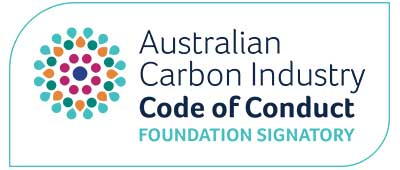Carbon farming at the native title conference
It can be hard work getting Indigenous carbon farming on the agenda in northern Australia, but the opportunity was not lost at the 2016 Native Title Conference in June in Darwin.
First up was the Olkola crew. Karrell Ross traced the long journey to win back title: station by station, multiple native title applications and finally a land settlement in 2014. The deal made Olkola the largest private landholder in Cape York. Not bad.
Amanda Hogbin, CEO, then explained how they asserted their position and used the land to set up enterprises. From 2010, they set up partnerships with the Australian Conversation Foundation and The Nature Conservancy to help lobby for more opportunities. They started a fee for service business. In 2015, a joint venture with Intrepid Travel for paid tours on country was added. And over the last couple of years, carbon has also been right in the thick of it—165,000 credits over the last couple of years. In 2011, self generated income was about 2% of income. By 2015, this had risen to 61%. Carbon is no small part of that. Amanda said clear vision, avoiding rash decisions and investing in partners were all important.
The grand statesman of Olkola, Mike Ross, rounded the presentation, noting the need to stay the course to see things through. “The government change the legislation like they change their shirt,” Mr Ross said, lamenting the constant paperwork and changes. Mr Ross paid respects to countrymen lost along the way but said his passion for country is deep and he couldn’t let it go.
Dr Kamaljit Sangha was up next highlighting the story of bigger benefits from doing projects on the land. Spinoff benefits might include socio-economic, health, educational and cultural benefits for a wide range of Indigenous people. Dr Sangha’s presentation was a strong case for going beyond our ‘utilitarian’ approach of only valuing commodities coming off the land and not the non-market benefits staying on the land. Using this kind of approach, activities like running cattle don’t come out too well whereas more holistic land management activities, like savanna burning, produce a slew of other ‘services’ which mean their market worth is really undervalued.
Ronald Morgan, from Balanggarra country in the Kimberley, led off the final group, letting the crowd know how much the savanna burning project meant to his people. Ronald recently became chair of Balanggarra Aboriginal Corporation and in this role he had come to learn about the blend of traditional and western fire knowledge and how this could be used to enliven the country. Ronald has a great story of stayin’ alive captured on Australian Story.
I followed with the less sexy but important alert on legal issues that might be associated with the advent of the carbon storage savanna method. This proposed change would mean that projects can receive credits for the extra storage of carbon in debris on the ground as well as for the reduction in fire emissions into the air. The heart of it is that on pastoral land, where rights are often shared, projects will need to win the consent of any native title holders. How will these deals play out? Another issue to watch is the approach of states to issuing carbon rights over native title land. Will the states require consent of native title holders? The new method is coming soon so it will be interesting times for the savanna industry.
So there you have it. Three presentations taking different tacks, but all firmly focused on keeping carbon farming on the northern Australia agenda. Anything else brought in $30 million to Indigenous groups lately?
























